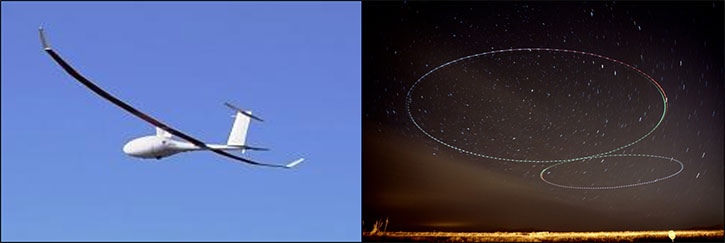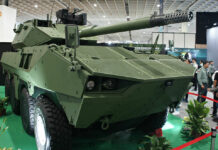A DARPA-backed small business effort broke boundaries for long-endurance flight this month by launching a uniquely designed, combustion-powered unmanned aircraft that stayed aloft for more than 48 hours. The propeller-driven VA001 built by Vanilla Aircraft of Falls Church, Virginia, is designed to carry a 30-pound (13.6 kg) payload at 15,000 feet (4.5 km) for up to 10 days without refueling. The flight was a step towards demonstrating the system’s objective performance of carrying a 30-pound payload for 10 days at an altitude of 15,000 feet. “This record-breaking flight demonstrated the feasibility of designing a low-cost UAV able to take off from one side of a continent, fly to the other, perform its duties for a week, and come back—all on the same tank of fuel,” Jean-Charles Ledé, DARPA program manager commented.
The VA001 started its historic flight on the morning of November 30, 2016 at New Mexico State University’s Unmanned Air Systems Flight Test Center near Las Cruces International Airport. After staying aloft for two days and two nights. VA001 made its first flight in early 2015 and in April 2016 performed a 25-hour flight at the same test range. The November flight was planned to test a 120-hour mission but was terminated several days ahead of schedule, due to predictions of unstable weather condition. The craft landed safely with more than half its fuel still onboard, suggesting it is capable of setting additional records for powered flight in its weight and power class and could ultimately offer significant new capabilities to ground forces and others.
The flight lasted for nearly 56 hours, where the plane flew at an altitude of 6,500 – 7,500 feet above sea level, averaging 57 knots (105 km/h) before landing on the afternoon of December 2. The airplane carried 20 pounds of actual and simulated payload and was a further step for the VA001 The payload included communications relay that operated continuously throughout the flight to demonstrate functionality out to the maximum range. The airplane also carried a multispectral imaging payload provided by NASA, as a demonstration of Earth science and agricultural remote sensing.
“The ability of a low-cost platform to provide persistent surveillance, battlefield pattern of life, or aerial mesh network relay, in a responsive and robust manner, and without forward basing, does not currently exist,” Vanilla co-founder and chief engineer Neil Boertlein explained.

Small unmanned aerial vehicles (UAVs) are an increasingly important means for military forces – especially small dismounted units – to bring extra communications or intelligence, surveillance, and reconnaissance (ISR) capabilities to the field. Current designs, however, offer relatively short range and flight endurance; additionally, their need for frequent refueling, specialized launch and recovery equipment, and regular maintenance often limit them to flying from fixed bases close to the front lines.
The VA001 has transformational potential, providing a scalable aerial system solution without increasing personnel or operating costs. This capability would help extend the footprint of small units by providing scalable, persistent UAV-based communications and ISR coverage without forward basing, thereby reducing personnel and operating costs.
“The VA001 would be a cost-effective option for widespread and regular low-level surveying. We could fill an extensive cost and payload-capability market gap between small electric and large military unmanned aircraft, which is perfect for many commercial applications,” says co-founder and program manager Jeremy Novara. Vanilla is currently exploring strategic partnerships and equity financing to expand into this market.A representative from the National Aeronautic Association—the organization that verifies and tracks flight-related world records—certified the flight as achieving the world duration record for combustion-powered UAVs in the 50 kg-500 kg subclass (FAI Class U-1.c Group 1). Moreover, the flight was the fourth-longest for any unmanned airplane and the 11th-longest for a plane of any type (manned or unmanned, solar or fuel-powered).
The flight was supported by the technology innovation investments of the Department of Defense’s Rapid Reaction Technology Office (RRTO) and DARPA-funded efforts through Naval Air System Command (NAVAIR).





















